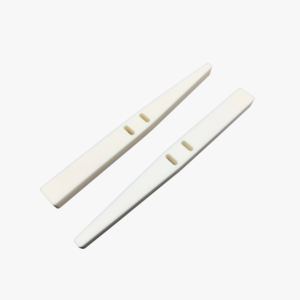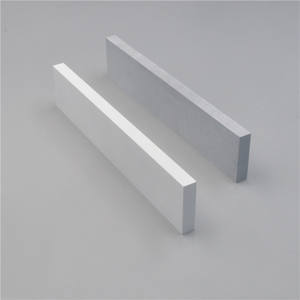Professional industry ceramic supplier, silicon nitride, silicon carbide, aluminum nitride and any other kinds of ceramics.
PRODUCT PARAMETERS
Description
Overview of Laser Cutting Scribing Alumina Ceramic Substrate Al2O3 Aluminum Oxide Plate
Laser Cutting Scribing Alumina Ceramic Substrate Al2O3 Aluminum Oxide Plate are one of the most widely used and versatile technical ceramics, prized for their excellent combination of properties. Composed primarily of aluminum oxide (Al₂O₃), they offer outstanding hardness, wear resistance, and electrical insulation, even at high temperatures. From low-purity grades for general industrial use to high-purity compositions for demanding applications, alumina ceramics provide a cost-effective and reliable solution across a vast range of industries.
Features of Laser Cutting Scribing Alumina Ceramic Substrate Al2O3 Aluminum Oxide Plate
-
High Hardness & Wear Resistance: Excellent resistance to abrasive wear, making it ideal for liners, nozzles, and guides.
-
Superior Electrical Insulation: Maintains high electrical resistivity and dielectric strength, even at elevated temperatures.
-
Excellent Thermal Stability: Withstands high operating temperatures and exhibits good thermal conductivity.
-
High Mechanical Strength: Possesses good compressive strength and stiffness.
-
Chemical Inertness: Resists corrosion from a wide range of acids, alkalis, and other harsh chemicals.
-
Cost-Effectiveness: A highly versatile and economically efficient ceramic material for numerous applications.
Specification of Laser Cutting Scribing Alumina Ceramic Substrate Al2O3 Aluminum Oxide Plate
This alumina ceramic plate uses Al2O3, aluminum oxide. It’s made for precise laser cutting and scribing. The material is very hard. It resists wear extremely well. This plate handles high heat easily. It stays stable even at intense temperatures. Electrical insulation is another key benefit. It stops current flow effectively.
Laser processing gives big advantages. It creates very clean, sharp edges. The cuts are precise. You get complex shapes accurately. Laser scribing makes fine lines or breaks. This prepares the substrate for controlled separation later. The method minimizes material damage near the cut zone. You waste less ceramic. Laser work is fast. It boosts production speed.
The ceramic composition is mostly Al2O3. Purity levels are typically high, like 96% or 99%. This ensures consistent performance. The plate offers excellent thermal conductivity for a ceramic. Heat moves through it well. Its electrical insulation remains strong under high voltage. The surface is smooth. It provides a good base for circuits or coatings. Mechanical strength is high. The plate resists breaking under stress.
Common uses include electronics. It serves as a circuit board base. LED packages often use it. Power modules rely on its insulation. Sensors need its stability. Laser cutting makes custom shapes for these jobs. Scribing defines where chips separate after assembly. The plate works in tough conditions. It lasts a long time.
Applications of Laser Cutting Scribing Alumina Ceramic Substrate Al2O3 Aluminum Oxide Plate
Laser cutting scribing transforms how we work with alumina ceramic substrates. Alumina ceramic is hard and brittle. Traditional cutting methods often cause cracks or chips. Laser processing avoids these problems. It delivers clean, sharp edges consistently. This method uses a focused laser beam. The beam vaporizes material precisely along programmed paths. It doesn’t touch the ceramic physically. This non-contact nature prevents mechanical stress. That means no micro-cracks or material damage near the cut line. Precision is key. Lasers achieve very narrow kerf widths. They handle intricate shapes and fine details easily. This is vital for complex electronic components. The process is fast and automated. It works well for high-volume production runs. Setup changes are simple. Operators adjust the laser path digitally. This saves time and reduces waste.
Laser scribing alumina plates creates break lines. These are shallow grooves. The substrate breaks cleanly along these scribed lines later. This is perfect for separating individual circuits on a larger panel. It minimizes edge defects. Clean edges are essential for reliable electrical performance and component mounting. Alumina ceramic Al2O3 plates are common in electronics. They serve as insulating bases. Circuits are built directly onto them. Laser cutting creates precise shapes for circuit boards, sensor housings, and insulators. The medical field uses laser-cut alumina parts too. Examples include implantable device components and diagnostic tool elements. Industrial applications are numerous. Laser-cut alumina works in high-temperature fixtures, wear-resistant parts, and specialized windows. The aerospace industry relies on its stability. Laser processing ensures the strict tolerances needed. The quality of the cut edge is critical. A smooth, defect-free edge ensures proper sealing and electrical isolation. Laser cutting scribing makes this possible reliably. It unlocks the full potential of alumina ceramic substrates across demanding fields.
Company Profile
Tanki New Materials Co.Ltd. focus on the research and development, production and sales of ceramic products, serving the electronics, ceramics, chemical and other industries. Since its establishment in 2015, the company has been committed to providing customers with the best products and services, and has become a leader in the industry through continuous technological innovation and strict quality management.
Our products includes but not limited to Aerogel, Aluminum Nitride, Aluminum Oxide, Boron Carbide, Boron Nitride, Ceramic Crucible, Ceramic Fiber, Quartz Product, Refractory Material, Silicon Carbide, Silicon Nitride, ect. please feel free to contact us.

Payment Methods
T/T, Western Union, Paypal, Credit Card etc.
Shipment Methods
By air, by sea, by express, as customers request.
5 FAQs of Laser Cutting Scribing Alumina Ceramic Substrate Al2O3 Aluminum Oxide Plate
What makes laser cutting better than diamond saws for alumina plates?
Laser cutting uses focused light. Diamond saws use physical blades. Blades wear down fast cutting hard alumina. This slows production. Lasers don’t physically touch the plate. They melt or vaporize the material cleanly. This means no blade wear. It also means much faster cutting speeds. You save time and money.
How precise is laser scribing on alumina?
It’s very precise. Modern laser systems achieve accuracy within a few microns. That’s thinner than a human hair. This precision is perfect for tight-tolerance parts. It ensures components fit perfectly every time. You get consistent, reliable results batch after batch.
Does laser scribing leave rough edges?
Usually no. Laser cutting produces smooth, clean edges. This is a major advantage. Mechanical methods often chip or crack the brittle ceramic. Laser energy melts the material precisely. This minimizes micro-cracks. You get a high-quality edge finish ready for assembly. Little extra finishing work is needed.
Does the laser heat damage the ceramic?
Heat is managed carefully. The laser beam is extremely focused. The interaction time is very short. This localizes the heat. The surrounding material stays cool. We use specific laser settings for alumina. This prevents excessive heat buildup. You avoid problems like cracking or warping.
How thick an alumina plate can be laser scribed?
It depends on the laser power. Common industrial lasers handle plates up to 2mm thick easily. Higher power lasers can cut thicker plates, sometimes up to 5mm or more. Thicker plates need slower cutting speeds. They also need careful control of the laser parameters. Tell us your thickness. We confirm if laser scribing works well.
REQUEST A QUOTE
RELATED PRODUCTS
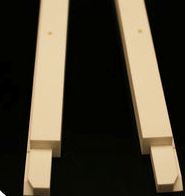
Zirconia Ceramic Gravel-Enhanced Aluminum Oxide Ceramic Basket Gemstone 38.1*25*23mm
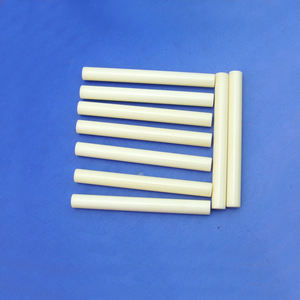
High Purity Aluminum Oxide Substrate Thin Al2O3 Alumina Ceramic Sheet
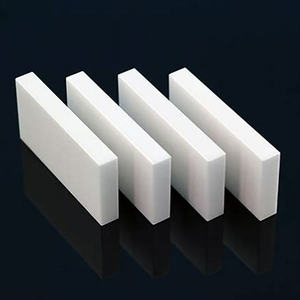
Laser Scribing 96% 99.6% Aluminum Oxide Substrate Al2O3 Alumina Ceramic Plate
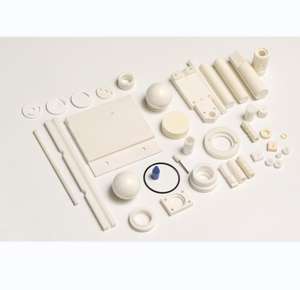
0.5mm Thick 96% Al2O3 Alumina Ceramic Substrate Aluminum Oxide Plate

96% 99.6% as Fired Blank Al2O3 Substrate Aluminum Oxide Alumina Ceramic Plate
